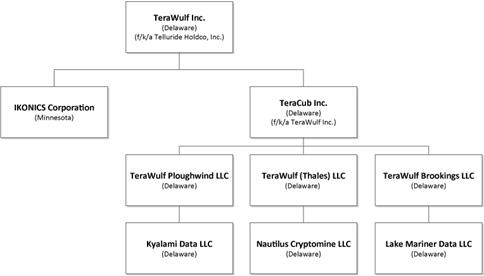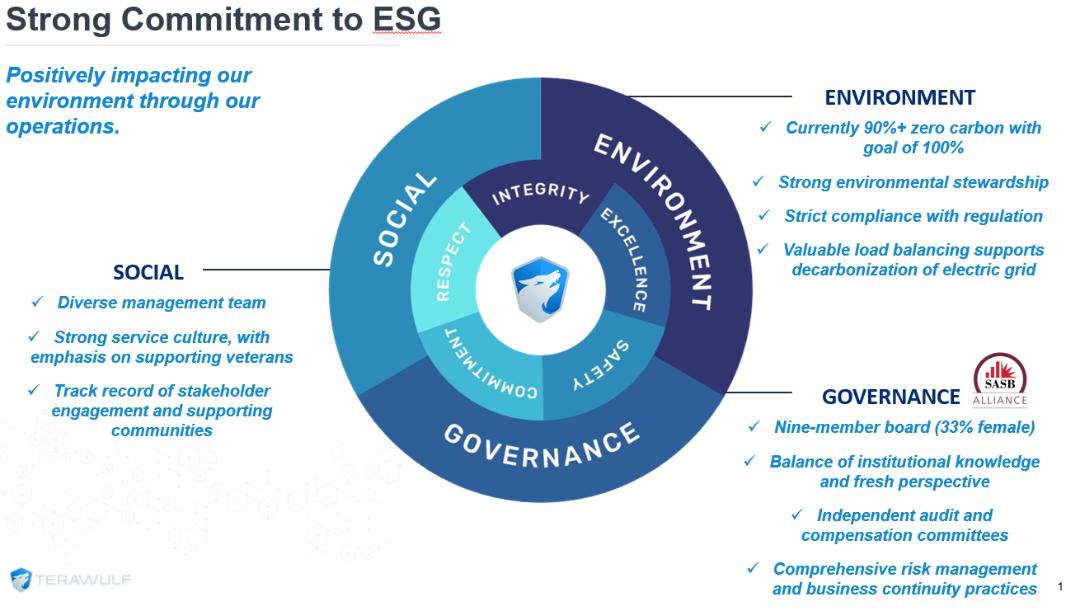TeraWulf faces risks and disruptions related to supply chain issues, including in semiconductors and other necessary application specific integrated circuit components, which could significantly impact its business, financial condition and results of operations.
China has limited the shipment of certain products in and out of its borders, which could negatively impact TeraWulf’s ability to receive bitcoin mining equipment from its China-based suppliers. TeraWulf’s third-party manufacturers, suppliers, sub-contractors and customers have been disrupted by worker absenteeism, quarantines, restrictions on employees’ ability to work, office and factory closures, disruptions to ports and other shipping infrastructure, border closures or other travel or health-related restrictions, as a result of the COVID-19 pandemic. Depending on the magnitude of such effects on TeraWulf’s supply chain, shipments of parts for its existing miners, as well as any new miners TeraWulf purchases, may be delayed.
As its miners require repair or become obsolete and require replacement, TeraWulf’s ability to obtain adequate replacements or repair parts from their manufacturer may be hampered. Supply chain disruptions could therefore negatively impact TeraWulf’s business, financial condition and results of operations.
Additionally, many of the competitors in our industry have also been purchasing mining equipment at scale, which has caused a world-wide shortage of mining equipment and extended the corresponding delivery schedules for new miner purchases. There are no assurances that our manufacturers Bitmain and Minerva, or any other manufacturers, will be able to keep pace with the surge in demand for mining equipment. It is uncertain how manufacturers will respond to this increased global demand and whether they can deliver on the schedules promised to all of their customers. In the event Bitmain, Minerva or other manufacturers are not able to keep pace with demand, we may not be able to purchase miners from Bitmain, Minerva or other manufacturers in sufficient quantities or on the delivery schedules that meet our business needs.
The cost of obtaining new and replacement miners and parts has historically been capital intensive, and is likely to continue to be very capital intensive, which may have a material and adverse effect on our business and results of operations.
Our mining operations can only be successful and ultimately profitable if the costs, including hardware and electricity costs, associated with mining cryptocurrencies are lower than the price of the cryptocurrencies we mine when we sell them. Our miners experience ordinary wear and tear from operation and may also face more significant malfunctions caused by factors which may be beyond our control. Additionally, as the technology evolves, we may acquire newer models of miners to remain competitive in the market. Over time, we replace those miners which are no longer functional with new miners purchased from third-party manufacturers, who are primarily based in China.
For example, the 30,000 S19j Pro miners and 18,000 S19 XP miners we purchased from Bitmain and the 10,000 MV7 miners we purchased from Minerva in the fiscal year ended December 31, 2021 will eventually become obsolete or will degrade due to ordinary wear and tear from usage, and may also be lost or damaged due to factors outside of our control. Once this happens, these new miners will need to be repaired or replaced along with other equipment from time to time for us to stay competitive. This upgrading process requires substantial capital investment, and we may face challenges in doing so on a timely and cost-effective basis based on availability of new miners and our access to adequate capital resources. If we are unable to obtain adequate numbers of new and replacement miners at scale, we may be unable to remain competitive in our highly competitive and evolving industry. If this happens, we may not be able to mine cryptocurrency as efficiently or in similar amounts as our competition and, as a result, our business and financial results could suffer. This could, in turn, materially and adversely affect the trading price of our securities and our investors could lose part or all of their investment.
The price of new miners may be linked to the market price of bitcoin and other cryptocurrencies and, if the current relatively high market price of bitcoin persists, our costs of obtaining new and replacement miners may increase, which may have a material and adverse effect on our financial condition and results of operations.
Reports have been released that the prices of new miners are adjusted according to the price of bitcoin. As a result, the cost of new machines can be unpredictable, and could also be significantly higher than our historical cost for new miners. Similarly, as bitcoin prices have risen, we have observed significant increase in the demand for miners. As a result, at times, we may obtain Bitmain miners and other hardware from Bitmain or from third parties at higher prices, to the extent they are available. For example, we observed a significant appreciation in the market price of bitcoin in the second half of 2020 through the first half of 2021, and simultaneously witnessed an increase in the per-unit price of the latest generation mining equipment. While we cannot know definitively whether these two phenomena are linked, we have seen a measurable increase in the prices for new miners offered by Bitmain as Bitcoin prices increase.

